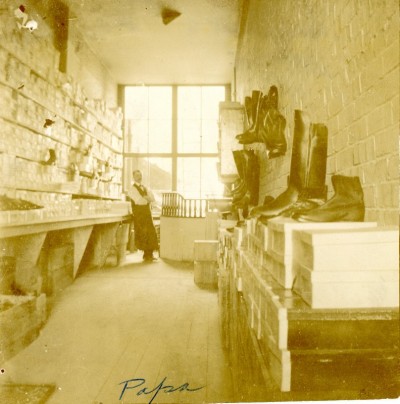
Thomas Maplethorpe in Shoe Store. Back of image reads “Tom Maplethorpe shoe store, Salem, Ore. State ST. Next to Bush Bank.”
WHC Collections: 1983.004.0008.009.
It all started, as it often does, with a picture. While looking for something else, my eye caught on a photograph showing a man leaning casually against a cabinet in a narrow room, shoes, boots and boxes lining shelves along the brick walls. A single word – papa — scrawled along the bottom edge of the image. It was one of those moments where the past and the present seem not so very far apart. I posted the image on our Facebook page, wanting to share the moment. Then came the dreaded question – when was this photo taken?
Like so many photos in our collections, no one took the time to conveniently write down the date of the picture. It is labelled. Someone, in neat, penciled writing identified: “Tom Maplethorpe shoe store Salem, Ore. State St. Next to Bush Bank.” Ok, I thought, maybe we can determine when Maplethorpe operated a shoe store in this location and at least narrow it down a bit. With the help of volunteer Jim and many hours later, we learned a lot about Maplethorpe’s life story and his near four-decade career in the shoe industry in Salem.
An Immigrant’s Journey
Thomas Maplethorpe came by the shoemaking business honestly. Born in Lincolnshire, England in 1856, by age 14 he was working as a shoemaker like his father Enoch.[1] How does an English shoemaker end up in Salem, Oregon? While we don’t have a first-hand account, we can draw some interesting conclusions based on clues left behind in official records.
Thomas’ father died in his late forties[2], leaving his oldest son Thomas to help care for his mother and 8 children still living at home. While all the children aged 10 and above were listed as working in the 1881 English census (mostly in the textile industry), we can speculate that most financial pressure would likely fall on Thomas as the oldest son in the household, at that time in his early 20s.[3] This was not a particularly flush economic time. The period between 1873 and 1893 used to be called the Great Depression – the worst the world had seen before stock market crash in 1929.[4] While the recession was a global phenomenon, the United Kingdom was particularly hard hit. Perhaps this explains why, in 1881, Thomas was arrested and sentenced to a month in jail for stealing a “cock and hen.”[5] He had no previous convictions and it is not beyond the realm of possibility to imagine the stolen goods going to feed the ten hungry mouths at home. The prison records offer no motive for the crime, but they do provide us with a visual sketch of the 24-year-old Maplethorpe. 5’4” tall, brown hair, and tattoos on both arms – right arm with an “NC” and left arm with an anchor and the letter “M.”[6]
A month after his May 1881 release from a Yorkshire prison, the ship’s manifest of the Ethiopia shows a 24-year-old shoemaker named Thomas Maplethorpe arriving in the New York Harbor from Glasgow.[7] The next glimpse we get of Maplethorpe from official records is his marriage to Sophia Barbara Widmer in Illinois in 1885.[8] Why Illinois? Well, his mother’s brother George had settled there. He had cousins living there as well.[9] Chain migration may be a hot button topic today, but it is not a new concept. It might also provide insight into the move of a large swath of Maplethorpe’s relatives to Oregon. Tom’s younger brother James Maplethorpe moved to Oregon and became a foreman at the Thomas Kay Woolen Mill, putting his youthful experiences as a worsted spinner in Yorkshire to good use.[10] Maplethorpe’s cousin George W. Eyre (father to the Mary Eyre the school would be named after) would eventually move to Oregon after a visit to his wife’s family in West Salem convinced them settle permanently.[11]
Life in Salem
The earliest reference to Thomas Maplethorpe in Salem comes from the 1893 city directory where he Is listed as a shoemaker working for Anthony Klein’s boots and shoe store on Commercial Street.[12] In 1897, Klein’s stock was moved to the Bush Bank Block on State Street[13], probably partly because he owed Asahel Bush a lot of money. In a spectacular court case labelled the ”Salem Shoe Suit” by some newspapers and marketed for its entertainment value (one sub- headline clarified the reader could expect “Some witty passages between the lawyers and witnesses in the case”), Asahel Bush sued Anthony Klein of fleecing him out of more than $4,000. Maplethorpe got mixed up in this mess along the way. In his testimony he claimed he quit working for Klein in 1897, but that prior to that he had helped him identify a new location in Pendleton. Maplethorpe testified that Klein had been secretive about the inventory process, giving direct orders that Bush should not be made aware of what they were doing. Letters between Maplethorpe and Klein were dramatically read in court (by an 80-year-old judge who, the reporter notes, did not need to use his glasses). The one liners in the letters reportedly brought much ”amusement” to the courtroom. The gathered crowd guffawed when a passage was read in which Klein asked if Maplethorpe could “make old lady Gray a pair of pumps? I do not want Bush to make them.“ The reporter assured readers even plaintiff Bush laughed at that one.[14]
By December of 1898, Thomas Maplethorpe’s name began to be associated with the Salem Shoe Store, the business spun off from Klein’s old stock. In advertisements this establishment was described as “next door to Bush’s Bank.”[15] This seems like the earliest the photo could have been taken.
It is hard to say, however, how long he stayed at this address. The next advertisement for the Salem Shoe Store in March of 1899 lists R.H. Leabo as the manager.[16] A July 1899 news mention states that Maplethorpe was taking over the shop of W.W. Martin who had decided to “rusticate for the summer.“ Martin‘s shop was helpfully described as on “State Street.“[17] This seems to indicate a move by Maplethorpe, but the lack of specificity in location does not help much in determining if maybe this new building could have been where this photo was taken or not. The 1905 City directory places Maplethorpe‘s shop on State Street, near the bank.[18]
In 1907, Maplethorpe teamed up with his cousin George Eyre to take over the “E.L. Irvin & Co. Shoe store on State Street.”[19] The address listed was 326 State Street, which today is part of the what we know as the Ladd & Bush Bank Building, but at the time that bank had a smaller footprint and several other buildings stood at that spot. In one advertisement, this new store is described as ”Next to Bush’s Bank.”[20] Luckily for us, the new partnership emphasized advertising and we get a vivid picture of the types of materials for sale at this new Salem Shoe Store iteration. White canvas slippers, rubberhide high top boots, ”tennis shoes galore,” children’s sandles, and “Dr. Reed‘s Cushion Shoes for tender feet for men.“ Even shoes specific for work in the hop yard marketed in late August at the height of the hop harvest season.[21] They were nothing if not confident in their marketing, noting in one ad: ”the people treat us all right, for they keep coming in numbers that more than satisfy our expectations. We must be marketing good, eh?”[22]
By 1909, Maplethorpe sold out of the business and transitioned to working as the shoe repairman at the HW & M.L. Meyer’s Department Store (then located in the Reed Opera House), providing a late date for the photo as this building was on Court Street. He would strike out again on his own after the department store closed operating a shoe repair business at various locations in the 1800 and 1900 block of State Street until his retirement in 1936, but these buildings were a long way from Bush’s Bank.[23]
So hours later, and what did we learn. The photograph may have been taken anytime between 1898 and 1909, probably.
Citations
[1] 1871 English Census (Hollynd, Yorkshire). LIsts Enoch (born Billinghay, ag 42) as shoemaker with his son Thomas (born Bicker) also listed as shoemaker. 1861 English Census (Heckington, Lincolnshire) also lists Enoch (born in Billinghay) as a shoemaker.
[2] See Grave notation for Enoch Maplethorpe (1829-1878) https://www.findagrave.com/memorial/116561881
[3] See English Census 1881 (Shipley, Yorkshire).
[4] “Long Depression.” Wikipedia: https://en.wikipedia.org/wiki/Long_Depression.
[5] West Yorkshire Prsion Records. Register No. 8981. Thos. Maplethorpe. 18 April 1881. We particularly think this is our man, because the age matches as does the occupation. Accessed via Ancestry.com.
[6] See Note 4.
[7] Passenger lists for the ship Ethopia arriving NY Harbor in June 1881. Note this does not jive with later census notations indicating he immigrated in 1880 and at various other times. However, it seems like a plausible match to our Thomas Maplethorpe, especially given the age and the occupation.
[8] Illinois Marriage Records Index: Family Search: Plesant Ridge, Livingston, Illnois, Male 28 father: Enoch Maplethorpe Mother MArtha Eyre, Wife Sophia Widmer age 20 daughter of Samuel Widmer and Catharine Bealliad.
[9] Thomas Maplethorpe’s mother’s (Martha Eyre Maplethrope) big brother (George Edward Eyre) died in LIvingston illinois about four years before Maplethorpe’s presumed arrival. David Walter Eyre, the son of George Washington Eyre, Maplethorpe’s first cousin’s son David was born in 1882 in the same county Maplethorpe’s marriage is registered in. See: https://www.familysearch.org/tree/person/timeline/LZLN-2WM.
[10] Earliest mention of James in Salem papers appears in 1892. (”Deaths” Capital Journal 13 Oct 1892: ), although it is possible, he arrived earlier. Difficult to tell who arrived first, James or Thomas.
[11] https://www.statesmanjournal.com/story/life/2018/02/01/heritage-dress-tells-story-eyre-familys-journey-oregon/110025150/
[12] Salem City Directory, 1893. Lists store at 211 Commercial street. Since this address is prior to the renumbering sytem instigated by the City of Salem in 1904, this building would have been on the west side of Commercial street between Ferry and State Street. Close to Bush’s Bank, but across the street.
[13] See: “Cut Slash” Capital Journal 27 Aug 1897 pg 4. “The Klein large stock of standard shoes has been removed to the Bush Bank Block, State Street…Salem shoe store.”; Ditto “…Hard-Times prices” Oregon Statesman 29 Aug 1897 pg . 5. Also “Going like Hotcakes.” Oregon Statesman. 7 Sep 1897, pg 5. “A full line of women’s, men’s and children’s rubbers will be oped tomorrow. Next door to Bush’s Bank. Salem Shoe Store.” Also: “That is so; dead sure!” Capital Journal 6 Oct 1897, pg 3. “Fall and Winter Shoes.” Capital Journal 12 Sept 1898 pg 1 “Next door to Ladd & Bush Bank on State STreet – The Salem Shoe Store.”
[14] ”Bush V. Klein.” Capital Journal 7 Nov 1898 pg 4.
[15] ”Thos. Maplethorpe.” Capital Journal 28 Dec 1898. See also January 6 1899, page 3. Note the stock had been moved in 1897, by Maplethorpe’s own testimony at the 1898 trial, he had quit in 1897 and was at the time of his testimony, living in Columbia Falls. See ”Bush v. Klein” Capital Journal. 7 Nov. 1898, pg 4.
[16] Oregon Statesman 8 Marc 1899. Pag 1
[17] ”A New Location” Capital Journal 17 Jul 1899, pg. 2.
[18] Salem City Directory, 1905. 90 State Street. According to the pre 1904 rule changes, this would have placed the store on the south side of State Street between Liberty and Commerical – Four doors east from Commercial Street. Very nearly next door to the bank, although maybe a bit further removed.
[19] ”The Salem Shoe Store.” Oregon Statesman 17 MAy 1907, pg 4.
[20] ”It is Time.” Oregon Statesman. 18 Aug 1907, pg 8.
[21] ”Rubberhide HIgh Top Boots” Oregon Statesman 16 Nov 1907, pg 6; ”Salem Shoe Store Oregon Statesman18 May 1907, pg 6; ”Everything in Shoes.” Capital Journ7 Jun 1907, pg 8; ”Just to Remind You Once More.” Oregon Statesman27 Jul 1907, pg 6; ”It is Time” Oregon Statesman, 18 Aug 1907, pg 8.
[22] ”It’s All Right.” Capital Journal 3 Jul 1907, pg 8.
[23] See Salem City directories 1909, 1911, 1913, 1915, 1917, 1921, 1924, 1926-7, 1928-9, 1930-1, 1934, 1935, 1936-7; Also Obituary ”T. Maplethrope Passes Away.” Capital Journal. 11 Jan 1940 pg 14.
Article by Kylie Pine. First appeared in the Statesman Journal Sunday, March 3, 2019. Reproduced here with citations for reference purposes.



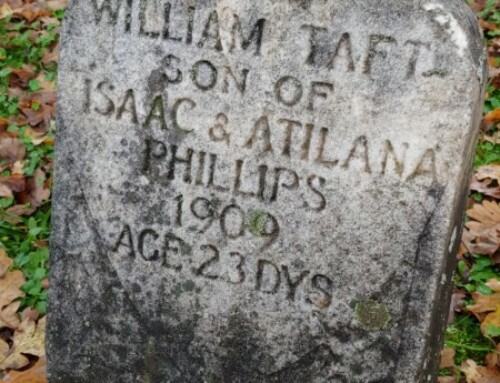

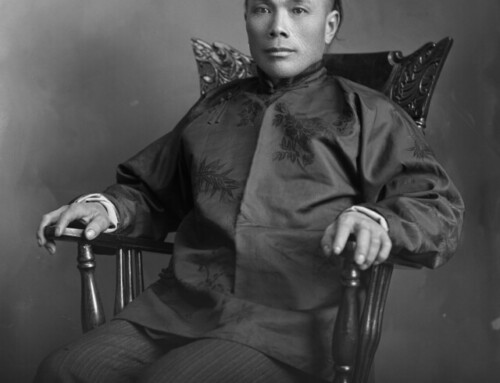
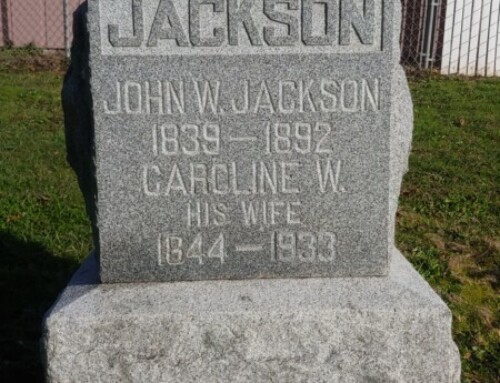
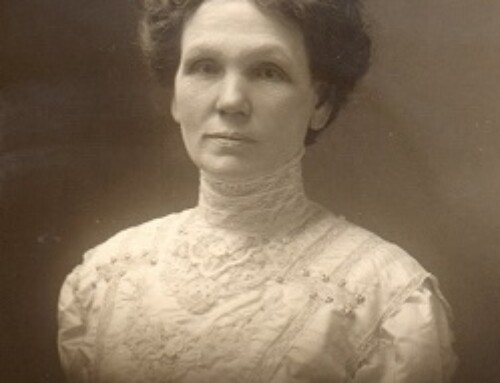
Leave A Comment